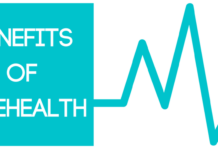In the world of beauty, a profound transformation is underway, one that transcends trendy ingredients and fleeting visuals, delving deep into the science of how our brains perceive, respond to, and benefit from beauty itself. The field of neuroaesthetics, alongside the rise of “skintellectual” consumers, is redefining what it means to look and feel beautiful in 2025.
Understanding Neuroaesthetics: Beauty in the Brain
Neuroaesthetics is an emerging discipline at the intersection of neuroscience, psychology, and art. Its core mission is to unravel how the brain processes aesthetic experiences, be it admiring a piece of art, enjoying music, or simply witnessing a beautiful sunrise. Research shows that engaging with beauty activates widespread networks in the brain, including pathways linked to emotion, memory, pleasure, and stress regulation (Medlink Neurology, 2024). Experiences of beauty, whether artistic or natural, can modulate neural activity, lower stress responses, and boost feelings of well-being.
This scientific lens on beauty does not just explain why we are drawn to harmonious colors or soothing sounds; it demonstrates that beauty is an essential pillar of mental, emotional, and even physical health. For instance, exposure to aesthetic environments has been shown to reduce anxiety, speed recovery in clinical settings, and promote positive mood (Global Wellness Institute, 2025).
Science-Backed Beauty: The Rise of the Skintellectual
Alongside these neuroaesthetic insights, the “skintellectual” movement is booming in 2025. Skintellectuals are well-informed consumers who approach beauty routines with a scientific mindset, demanding ingredient transparency, data-backed product claims, and measurable results (Istituto Marangoni, 2025). Rather than being swayed by hype or packaging, they seek evidence: does a product improve barrier function, boost collagen, or genuinely protect against stressors?
This shift toward science-led beauty is rewriting the industry’s norms. Consumers look for products proven to support neural wellness as well as skin health. Botanicals shown to reduce the stress hormone cortisol, peptides that trigger the release of feel-good neurotransmitters, and neurocosmetic formulations that target both the skin and the nervous system are rapidly gaining popularity (Cleansery, 2025).
Applications of Neuroaesthetics in Beauty
Neuroaesthetics is not just for academics or neuroscientists; its principles are finding practical applications throughout the beauty sector:
- Multisensory Experiences: Beauty retailers are designing immersive store environments that activate sight, touch, scent, and sound to enhance emotional well-being and loyalty. A visit to a flagship store is no longer just about sampling products, but enjoying a mood-lifting sanctuary that soothes the senses (Constellar Consultancy, 2024).
- Color Psychology and Formulation: Brands strategically use colors, textures, and fragrances to evoke specific emotional reactions, engaging neural pathways involved in pleasure and memory, which can impact product satisfaction and self-image (Constellar Consultancy, 2024).
- Storytelling and Emotional Branding: Campaigns are crafted with stories that champion self-care and inclusivity, activating neural circuits tied to empathy, trust, and reward (Istituto Marangoni, 2025).
- Neurocosmetic Innovations: Products now explore the skin-brain axis, with ingredients designed to trigger beneficial neurotransmitter release, like serotonin or dopamine, through the skin, elevating both mood and complexion (Cleansery, 2025).
Clinical and Wellness Applications
The impact of neuroaesthetics extends far beyond the vanity mirror:
- Therapeutic Art and Music: Art and music therapy, guided by neuroaesthetic principles, are increasingly used to reduce stress, anxiety, and depression, helping patients in clinical and rehabilitation settings recover more holistically (Medlink Neurology, 2024).
- Wellness Architecture: Beauty clinics and spas employ neuroaesthetic design to create visually soothing spaces, incorporating natural light, biophilic elements, and harmonious layouts that foster calm, healing, and optimism (Global Wellness Institute, 2025).
- Personalized Skincare Protocols: Diagnostic tools leveraging neuroaesthetics tailor treatments based on a patient’s unique neural and emotional responses, advancing the concept of personalized beauty (Constellar Consultancy, 2024).
Why Neuroaesthetics and Science-Backed Beauty Matter Now
2025’s beauty landscape is no longer driven solely by appearance, but by a quest for authentic wellbeing. Neuroaesthetics and science-led routines are empowering individuals to curate environments, routines, and mindsets that foster resilience, calm, and genuine self-confidence. The industry’s future will be shaped by brands and practitioners who translate brain science into practical, pleasurable, and effective beauty experiences.
As research grows, expect even greater synergy, where smart ingredients, neuro-informed design, and holistic therapies combine to make beauty healthy for both body and mind (Global Wellness Institute, 2025).
References
- Cleansery. (2025, May 5). Neurocosmetics: How does skincare affect your mood? https://cleansery.com/neurocosmetics-skincare-mood
- Constellar Consultancy. (2024, November 9). The neuroaesthetics upgrading beauty shoppers’ experiences. https://constellar.com/neuroaesthetics-beauty-experience
- Global Wellness Institute. (2025, February 25). The brain on beauty and the rising field of neuroaesthetics. https://globalwellnessinstitute.org/neuroaesthetics
- Istituto Marangoni. (2025, July 16). The blooming trend: Skintellectual wave—science-backed beauty redefines skincare. https://istitutomarangoni.com/skintellectual-beauty
- Medlink Neurology. (2024, November 13). Neuroaesthetics: Bridging art and science to enhance clinical practice. https://medlinkneurology.com/neuroaesthetics









